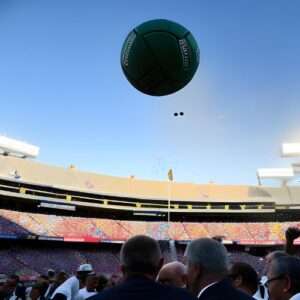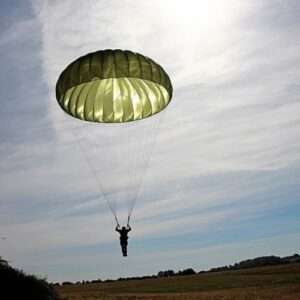Negative Acceleration Examples In Physics (And Real Life)

Negative Acceleration Examples In Physics
Here are the top 10 Negative Acceleration Examples In real life.
- Applying brakes in a car
- A Ball is thrown upwards
- A Ride on Rollercoaster
- Skydiving
- A person diving into a pool
- Slowing down of a swinging pendulum
- Braking a bicycle
- A rocket during re-entry
- A ball rolling up a hill
- A person skiing
Negative acceleration, sometimes known as deceleration, is an important concept in physics. It involves a decrease in speed or velocity over time.
In this blog post, we’ll be exploring 10 negative acceleration examples in both physics and real life. We’ll start by looking at examples of negative acceleration in physics.
By the end of this blog post, you’ll have a better understanding of how negative acceleration works and where it can be observed.
But before you read any further, it might be a good idea to briefly understand negative acceleration. It will help you to understand the examples better. If you are already familiar with the concept, you can skip it by clicking on the link below.
What does negative acceleration mean?
Negative acceleration is the decrease in the rate of change of an object’s velocity, which means that the object is slowing down.

For example, when you apply the brakes in a car, the car slows down, and the rate of change of its velocity becomes negative.
Recommended Read: Positive Acceleration Examples
Now let’s move on to examples.
10 Examples of Negative Acceleration Examples In Physics
I am sure that the concept of negative acceleration is clear to you now. Let us move on to 10 examples of negative acceleration in physics.
Examples
- Applying brakes in a car:

When you apply the brakes in a car, the car slows down, and the rate of change of its velocity becomes negative, causing negative acceleration.
The friction between the brakes and the wheels resists the motion of the car, causing it to slow down. -
A ball is thrown upwards:

When you throw a ball upwards, it starts to move upward, but its velocity decreases until it reaches the highest point of its trajectory, where its velocity becomes zero.
The force of gravity acts on the ball in the opposite direction to its motion, causing it to decelerate. -
Rollercoaster ride:

When a roller coaster is moving up on a hill, its speed decreases, and it slows down due to gravity. This is an example of negative acceleration.
The force of gravity acts on the roller coaster in the opposite direction to its motion, causing it to decelerate until it reaches the top of the hill.
When the roller coaster goes down the hill, gravity accelerates it, and it gains speed which is a positive acceleration. -
Skydiving:

When a skydiver jumps out of a plane, they initially accelerate due to gravity. However, as they deploy their parachute, the air resistance increases, and their acceleration decreases until they reach a steady state. -
A person diving into a pool:

When a person is diving into a pool, they initially accelerate due to gravity and their force. However, as they enter the water, the water resistance increases, causing the person to slow down.
The rate of change of their velocity becomes negative as they come to a stop in the water. This is an example of negative acceleration in the context of a person diving into a pool. -
Slowing down of a swinging pendulum:

When a pendulum is swinging, it has a maximum speed at the bottom of its swing, but as it swings back up, it slows down due to the force of gravity.
The force of gravity acts on the pendulum in the opposite direction to its motion, causing it to decelerate until it reaches the top of its swing. -
Braking a bicycle:

When you apply the brakes on a bicycle, the bike slows down, and the rate of change of its velocity is negative.
The friction between the brake pads and the wheels resists the motion of the bike, causing it to slow down. -
A rocket during re-entry:

As a rocket re-enters the Earth’s atmosphere, the air resistance increases, causing the rocket to slow down.
The force of air resistance acts on the rocket in the opposite direction to its motion, causing it to decelerate until it reaches a safe speed for landing. -
A ball rolling up a hill:

When a ball is rolling up a hill, it is slowing down due to gravity, and the rate of change of its velocity is negative. This is another example of negative acceleration.
The force of gravity acts on the ball in the opposite direction to its motion, causing it to decelerate until it comes to a stop at the top of the hill. -
A person skiing:

When a person is skiing down a slope, they may start at the top of the slope with a certain velocity. As they ski down the slope, their speed may increase due to gravity and the slope angle.
However, when they reach a flatter or uphill section of the slope or when they need to slow down for any other reason, they may apply their skis’ edges to the snow to increase the friction and slow down.
This causes the person to decelerate, and the rate of change of their velocity becomes negative.
References
-
Khan Academy: Acceleration:
https://www.khanacademy.org/science/physics/one-dimensional-motion/acceleration-tutorial/a/acceleration-article
This resource provides an introduction to acceleration and includes examples of acceleration.
-
Physics Classroom: Acceleration:
https://www.physicsclassroom.com/class/1DKin/Lesson-1/Acceleration
This resource provides a comprehensive overview of acceleration, including definitions, equations, and examples.
You have finished the complete article related to negative acceleration examples. If you have any doubts or queries, feel free to comment below. We will respond as soon as possible.
Or Email Us At [email protected]
More Articles:
Any topic you want us to cover? Let us know.

